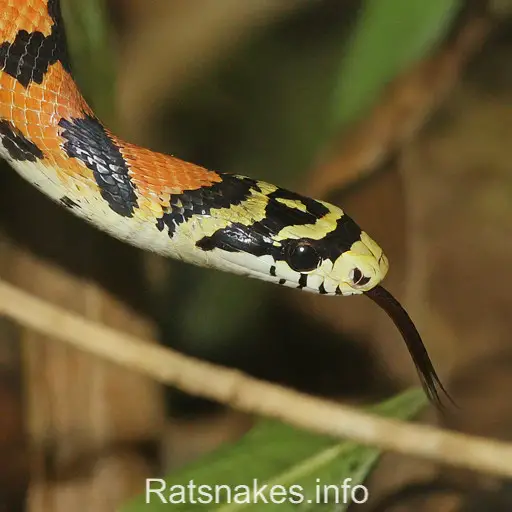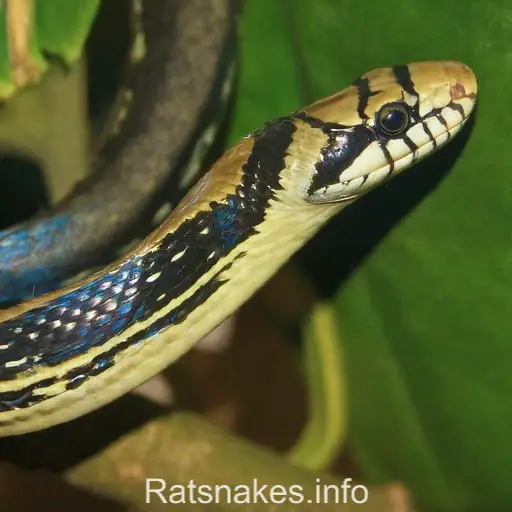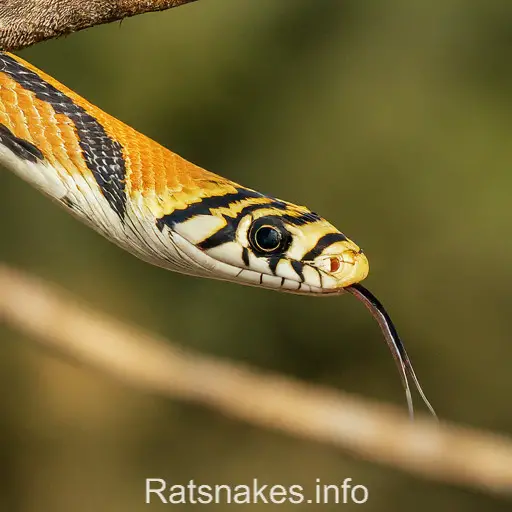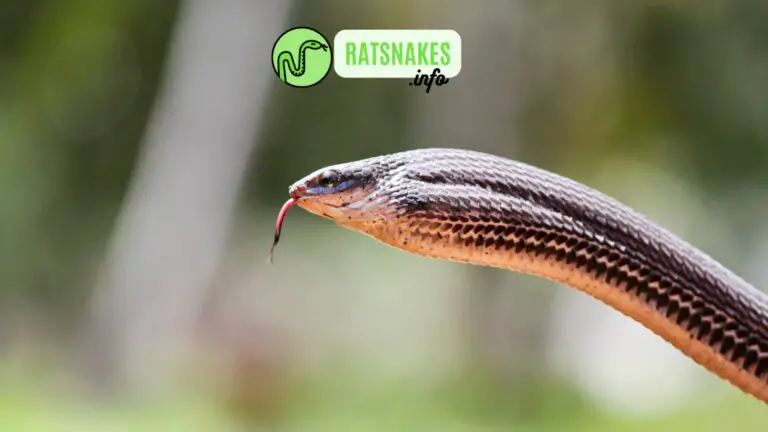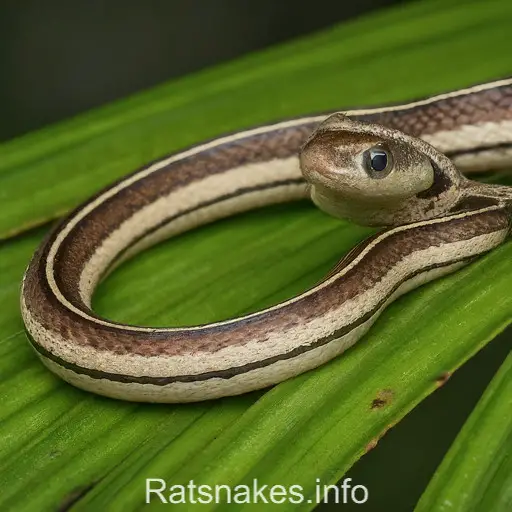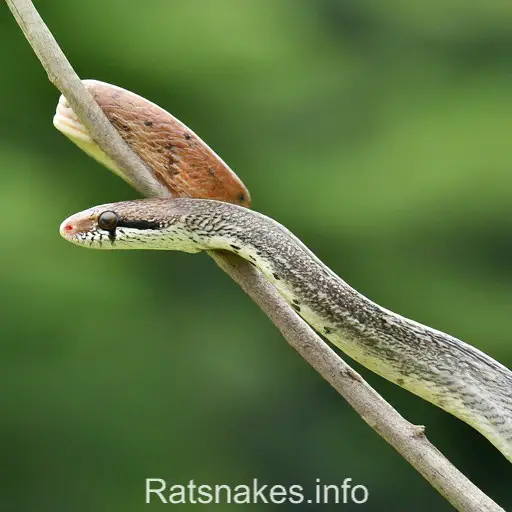
Are you intrigued by the fascinating world of snakes? We are here to dive into the captivating realm of the Japanese rat snake. Known for its striking appearance and unique behaviors, this species has captured the curiosity of many reptile enthusiasts. Join us as we uncover the secrets of this elusive serpent and explore its role in the ecosystem.
With its distinctive markings and impressive adaptability, the Japanese rat snake stands out among its reptilian counterparts. From its hunting techniques to its preferred habitats, there is much to learn about this intriguing creature. Stay with us as we unravel the mysteries surrounding this remarkable snake and gain a deeper understanding of its significance in the animal kingdom.
The Striking Appearance of the Japanese Rat Snake
When it comes to the Japanese rat snake, one cannot help but be captivated by its remarkable appearance. These snakes have a distinct pattern of dark green scales with bold black stripes running along their bodies, creating a visually striking contrast. Their slender bodies are designed for agility, allowing them to move swiftly through various terrains.
One of the most notable features of the Japanese rat snake is its vibrant red eyes that seem to pierce through their surroundings. These crimson orbs add an element of mystery to this already intriguing creature, making it a subject of fascination for many wildlife enthusiasts.
In addition to their eye-catching coloration, Japanese rat snakes can grow to an impressive length, sometimes reaching up to 1.5 meters, showcasing their impressive stature in the world of snakes. This size, coupled with their sleek physique, gives them a powerful presence in their natural habitat.
As our exploration of the Japanese rat snake continues, we will delve deeper into the unique behaviors and hunting techniques that make this serpent a truly remarkable species in the animal kingdom.
Unique Behaviors of the Japanese Rat Snake
When it comes to hunting, the Japanese rat snake showcases remarkable tactics. These serpents are known for their ambush hunting style, where they patiently wait for their prey to come within striking distance before making a swift and precise move. This strategy allows them to conserve energy while ensuring a successful catch.
Another fascinating behavior exhibited by the Japanese rat snake is its climbing ability. These snakes are incredibly adept at climbing trees and bushes, using their powerful muscles and scales to propel themselves upwards. This skill not only helps them in hunting for prey but also serves as a means of escaping potential threats on the ground.
In addition to their hunting and climbing prowess, Japanese rat snakes are also known for their curiosity and intelligence. They have been observed exploring their surroundings, investigating objects, and even solving simple problems to obtain food. This inquisitive nature sets them apart as highly adaptable creatures in various environments.
Furthermore, these serpents exhibit camouflage behavior to blend in seamlessly with their surroundings, making them expert ambush predators. Their ability to mimic the colors and patterns of their habitat allows them to remain hidden from both prey and predators, showcasing their survival instincts honed through millions of years of evolution.
The unique behaviors of the Japanese rat snake highlight their exceptional adaptability, agility, and intelligence in navigating their ecosystem and securing their survival.
Hunting Techniques of the Japanese Rat Snake
When it comes to hunting, the Japanese rat snake employs a range of tactics that showcase its prowess as a predator. Here are some key hunting techniques that these serpents utilize:
- Ambush Hunting: Japanese rat snakes are adept at ambush hunting, lying in wait for prey to come within striking distance. Their patience and ability to blend seamlessly with their surroundings make them highly effective ambush predators.
- Stealth and Patience: These snakes rely on stealth and patience to secure their next meal. With their keen sense of observation and quick reflexes, they patiently wait for the opportune moment to strike.
- Constriction: Once the Japanese rat snake captures its prey, it uses constriction to subdue and eventually consume it. This method not only immobilizes the prey but also aids in the digestion process.
- Climbing Abilities: The Japanese rat snake’s ability to climb trees and navigate through various terrains gives it a strategic advantage when hunting. From tree-dwelling rodents to birds’ nests, these serpents can access a wide range of prey thanks to their climbing abilities.
- Adaptability: One of the remarkable traits of the Japanese rat snake is its adaptability in hunting. Whether it’s stalking prey on the ground or in the trees, these serpents showcase their versatility and agility in different hunting scenarios.
By honing these hunting techniques over generations, the Japanese rat snake has established itself as a proficient predator in its ecosystem, demonstrating a perfect balance of strategy, patience, and agility in securing its next meal.
Preferred Habitats of the Japanese Rat Snake
When it comes to their preferred habitats, Japanese rat snakes show a remarkable adaptability to a wide range of environments. Here are some key points regarding where you’re likely to find these slithering predators:
- Forests: These snakes thrive in forested areas, where they can utilize their climbing skills to hunt for prey among the trees.
- Grasslands: The open spaces of grasslands also provide ample opportunities for the Japanese rat snake to hunt for small mammals, birds, and insects.
- Farmlands: Human-modified environments like farmlands can also attract these snakes due to the abundance of rodents and other potential prey animals.
- Wetlands: Areas with wetlands offer diverse hunting grounds for the Japanese rat snake, with opportunities to catch amphibians and other aquatic creatures.
- Urban Areas: Surprisingly, these adaptable snakes can also be found in urban areas, where they may seek shelter in gardens or even prey on pests.
The ability of the Japanese rat snake to thrive in such varied habitats is a testament to its resilience and resourcefulness as a predator.
Significance of the Japanese Rat Snake in the Ecosystem
The Japanese rat snake plays a crucial role in maintaining the balance of ecosystems in various habitats. Here are some key reasons why this species is significant:
- Natural Pest Control: Japanese rat snakes primarily prey on small mammals, birds, reptiles, and amphibians. By regulating the population of these pest species, they help in controlling pests that can otherwise be harmful to crops and other wildlife.
- Seed Dispersal: As opportunistic feeders, Japanese rat snakes also consume fruits. By doing so, they aid in the dispersal of seeds across different areas, contributing to the growth of vegetation and the overall biodiversity of the ecosystem.
- Prey Population Control: By regulating the population of prey species in their habitats, these snakes prevent overgrazing and help maintain a stable ecosystem where various species can coexist harmoniously.
- Role as Prey: Japanese rat snakes are not only predators but also serve as prey for larger predators, thus forming a vital part of the food chain. Their presence supports the survival of higher-level predators in the ecosystem.
Various studies have highlighted the importance of Japanese rat snakes in maintaining healthy ecosystems. Their interactions with other species and their impact on the environment underline the significance of preserving these reptiles in their natural habitats.
Key Takeaways
- Japanese rat snakes have a distinctive appearance with dark green scales, bold black stripes, and vibrant red eyes, reaching up to 1.5 meters in length.
- They exhibit unique behaviors like ambush hunting, climbing abilities, curiosity, intelligence, and camouflage to adapt and thrive in diverse environments.
- Their hunting techniques include ambush hunting, stealth, constriction, climbing abilities, and adaptability, making them proficient predators.
- Japanese rat snakes prefer habitats such as forests, grasslands, farmlands, wetlands, and even urban areas, showcasing their adaptability.
- These snakes play a crucial role in the ecosystem by providing natural pest control, aiding in seed dispersal, regulating prey populations, and serving as prey for larger predators.
Conclusion
In wrapping up, Japanese rat snakes are vital contributors to various ecosystems. Their role in natural pest control by preying on small mammals, birds, reptiles, and amphibians helps maintain a balance in pest populations. Furthermore, their consumption of fruits aids in seed dispersal, fostering vegetation growth and biodiversity. By regulating prey populations, Japanese rat snakes prevent overgrazing and support a harmonious ecosystem. As prey for larger predators, they play a crucial part in the food chain. Preserving these snakes in their natural habitats is essential for the overall health of ecosystems.

